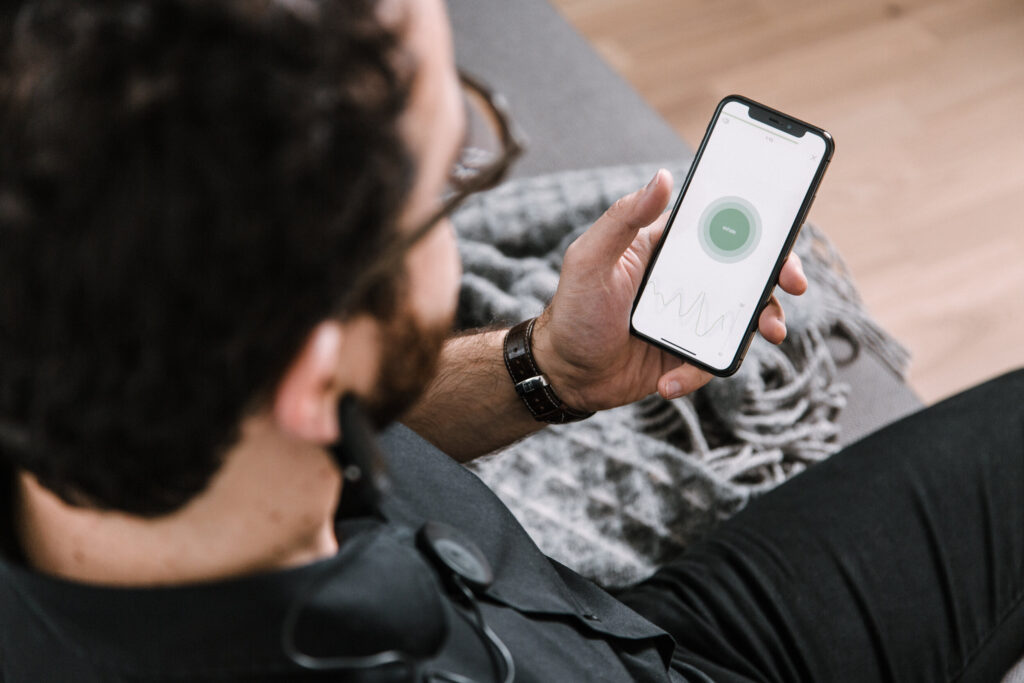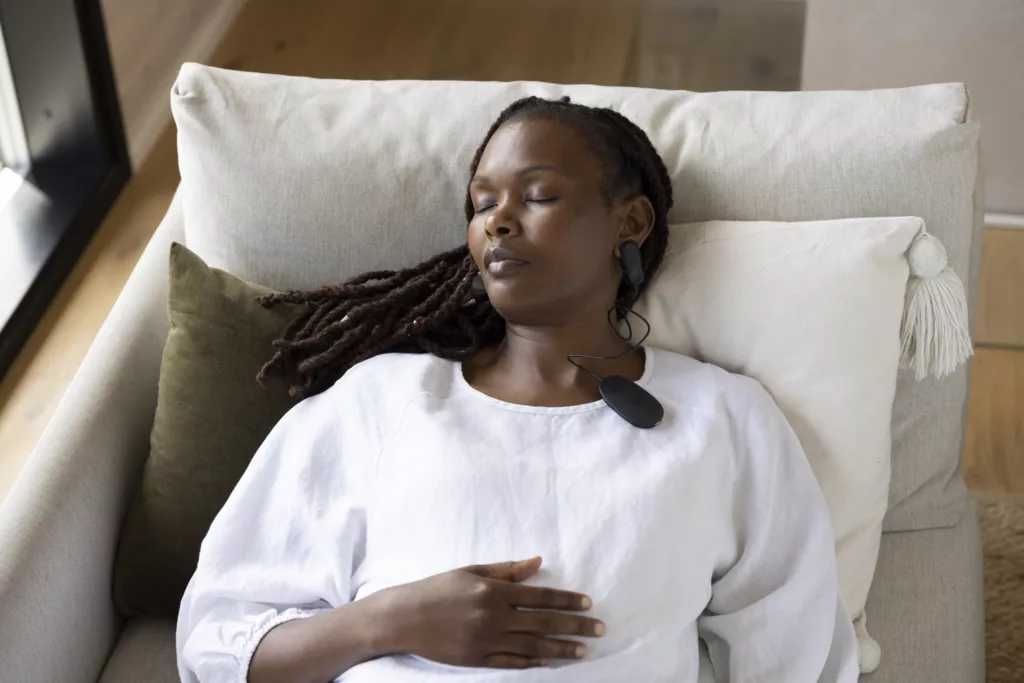

Inna Khazan, PhD. is a biofeedback breathing and mindfulness specialist from Harvard Medical School and a scientific advisor to Meru Health.
Valerie Hoffmann, PhD. is the Head of Research at Meru Health

Today, many people are in a state of constant stress. While biofeedback has long been used as a way to enhance physical health, it is also emerging as an effective way to combat stress and anxiety. Biofeedback is the process of training the body to better regulate involuntary functions like breathing and heart rate, which in turn helps improve both physical and mental health, and improves the body’s ability to deal with stressors.
Inna Khazan, Ph.D., a faculty member at Harvard Medical School who has been a certified biofeedback specialist for 20+ years, likens biofeedback to the advanced features of a digital SLR camera. “If you leave the camera in Auto mode, it will take good pictures – it works by itself, just aim and shoot,” says Dr. Khazan. “But to take really great photographs, you need to learn how to use all the fine controls, such as aperture and shutter speed. Mastering biofeedback has the same effect on the mind and body.” In other words, your body can do its job without biofeedback. But training the body with biofeedback methods can help you function at your best and help manage anxiety and even depression.
How to get started
At its essence, biofeedback trains self-regulation across multiple physiological functions, from breathing and heart rate to muscle tension and more. Breathing is one of the biofeedback modalities used to train self-regulation – specifically, learning to breathe a certain way, what Dr. Khazan calls “low and slow.” It’s a shift from breathing from your chest to breathing from your belly, and slowing down your breathing. Take a normal size inhalation through your nose – like smelling a flower – and then breathe out slowly like you’re blowing out a candle. Allow the exhalation to be as long as possible, until your lungs feel comfortably empty. This allows the proper amount of oxygen and carbon dioxide to remain in the bloodstream so your respiratory system functions at its best, and oxygen flow to your brain and organs is optimized.
Biofeedback gives us the ability to train physiological functions that you wouldn’t think are under your control, like Heart Rate Variability (HRV). Low and slow breathing at six breaths per minute (four-second inhalation and six-second exhalation) can be a good way to start training your heart rate variability. After you’ve gotten into a regular biofeedback practice, when a challenge or stressful situation comes your way, your body and mind know what to do in order to help you be at your best. You’ve trained them to handle it.
Misconceptions about biofeedback
Most people think biofeedback is highly complex, requiring all kinds of machines, devices, and specialized knowledge. While that may have been the case 30-40 years ago, it’s not anymore. Just like any other piece of hardware, the devices have shrunk from taking up half the room to fitting in your hand. Prices for home training devices range from under $50 to $500. You can learn to do it by yourself, or with a certified practitioner.
Dr. Khazan recalls one patient who asked her if biofeedback is like shock therapy. “It’s not at all!” she says. “The biofeedback device doesn’t do anything to you – it simply measures physiological function like your heart rate, via the surface of your skin. It’s completely non-invasive.” The advantage of adding the device to your biofeedback training, says Dr. Khazan, is to know what’s going on inside your body so you can achieve mastery.
The unlocked potential of biofeedback for mental health
Biofeedback is a great way to maintain not just physical health, but also mental health, and the latter is rarely discussed. It’s accessible to anyone. A biofeedback device can help by giving you data on the body’s response. After about six weeks of consistent 20-minutes-per-day training, when something happens that would normally provoke anxiety, most people see that their body and mind do a better job of regulating in the moment.
According to Dr. Khazan, biofeedback can also help people who suffer from depression. “With daily practice, over time, many people say that depression doesn’t have quite as strong a hold,” she says. “They are able to choose actions more easily. Biofeedback is an important complement to therapy and other mental health measures such as medication, and I often recommend it to people who suffer from depression or anxiety.”
Dr. Inna Khazan is a licensed clinical psychologist with over 20 years of experience, specializing in biofeedback and mindfulness-based approaches to optimizing health and performance. Dr. Khazan is a faculty member at Harvard Medical School. She also serves as a scientific advisor to Meru Health.
Valerie Hoffman holds a Ph.D. in Psychiatric Epidemiology from Johns Hopkins Bloomberg School of Public Health, and a Master’s degree in Public Health from Yale University. She has been studying psychiatric epidemiology for two decades and published over 70 peer-reviewed research papers. Valerie is the Head of Research at Meru Health, where she is part of developing a novel, technology-based integrated mental health solution to battle depression, anxiety, and burnout.





